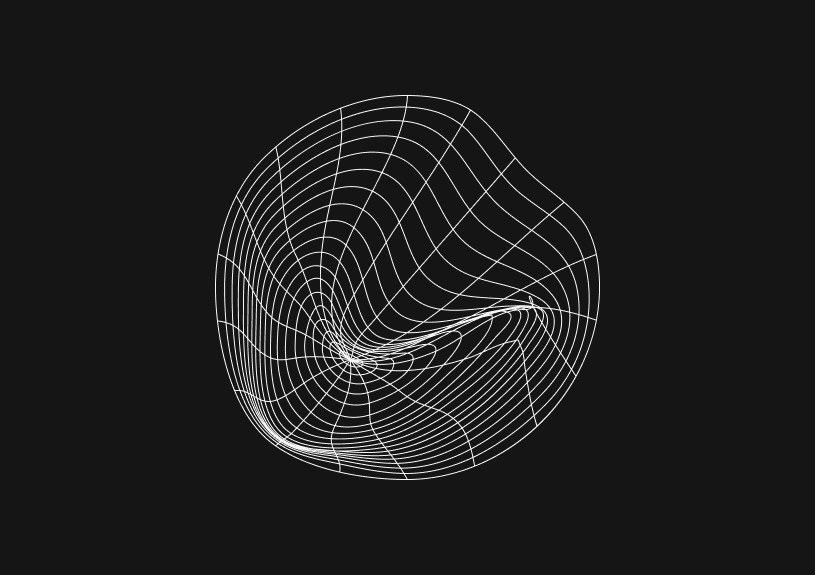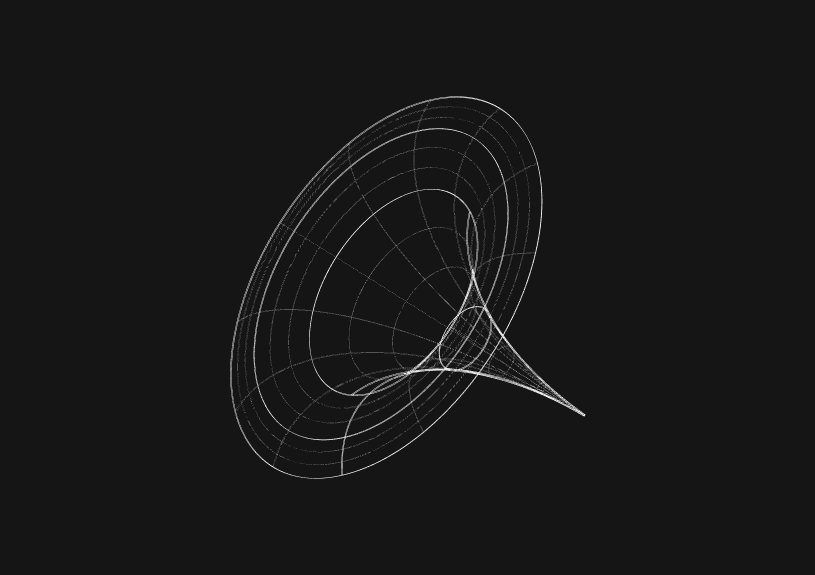
How TypeScript Partial Works
October 26, 2023
TypeScript, as a statically typed superset of JavaScript, offers a range of utility types that aid developers in manipulating types in various ways. One such utility type is Partial. In this guide, we'll dive deep into the Partial type, exploring its uses and how it works.
What is Partial Type in TypeScript?
In TypeScript, the Partial type takes in another type and produces a type where all of its properties are optional. It's essentially a way to make every property of an object type optional without having to manually set each property to be so.
Here's the basic definition of Partial:
type Partial<T> = { [P in keyof T]?: T[P]; };
Let's break this down:
Tis the type we pass toPartial.[P in keyof T]: This is a mapped type. It iterates over every key of typeT.T[P]: This denotes the type of the propertyPofT.[P in keyof T]?: T[P]: For every propertyPofT, make it optional and retain its original type.
Examples of Partial in Use
Consider we have the following interface:
interface Person { name: string; age: number; address: string; }
If we want to create a type where each of these properties is optional, we would use the Partial type:
type PartialPerson = Partial<Person>;
This is equivalent to:
type PartialPerson = { name?: string; age?: number; address?: string; };
Practical Usage
The Partial type is especially useful when dealing with functions that update objects. For instance, consider a function that updates a person's details:
function updatePerson(person: Person, update: Partial<Person>): Person { return { ...person, ...update }; }
In this function, we're taking a person and an update object. The update object can have any subset of the properties of Person, allowing us to update any combination of properties.
Nested Types and Partial
The Partial type only makes the top-level properties optional. If you have nested objects and you want their properties to be optional as well, you'd have to apply Partial recursively.
You could ship faster.
Imagine the time you'd save if you never had to build another internal tool, write a SQL report, or manage another admin panel again. Basedash is built by internal tool builders, for internal tool builders. Our mission is to change the way developers work, so you can focus on building your product.

When to Use Partial
- Object updates: As demonstrated above,
Partialis handy when updating objects, especially in state management scenarios. - Optional configurations: When defining configuration objects where only a subset of properties are mandatory, and the rest can be optionally provided by the user.
- Function arguments: When you have functions that accept a large number of arguments, it's often cleaner to encapsulate them in an object. Using
Partialcan then allow you to call these functions with only the arguments you want to specify.
Caveats
- Overuse: While
Partialis powerful, it should be used judiciously. Making everything optional can lead to runtime errors if you're not careful. - Deep nesting: As mentioned earlier,
Partialdoesn't make nested properties optional. If you require deeply nested properties to be optional, you might need custom utility types or recursive approaches.
In essence, the Partial type in TypeScript is a powerful tool in a developer's toolkit, allowing for greater flexibility in object manipulations and function arguments. With careful usage, it can greatly simplify code and make it more readable.
TOC
October 26, 2023
TypeScript, as a statically typed superset of JavaScript, offers a range of utility types that aid developers in manipulating types in various ways. One such utility type is Partial. In this guide, we'll dive deep into the Partial type, exploring its uses and how it works.
What is Partial Type in TypeScript?
In TypeScript, the Partial type takes in another type and produces a type where all of its properties are optional. It's essentially a way to make every property of an object type optional without having to manually set each property to be so.
Here's the basic definition of Partial:
type Partial<T> = { [P in keyof T]?: T[P]; };
Let's break this down:
Tis the type we pass toPartial.[P in keyof T]: This is a mapped type. It iterates over every key of typeT.T[P]: This denotes the type of the propertyPofT.[P in keyof T]?: T[P]: For every propertyPofT, make it optional and retain its original type.
Examples of Partial in Use
Consider we have the following interface:
interface Person { name: string; age: number; address: string; }
If we want to create a type where each of these properties is optional, we would use the Partial type:
type PartialPerson = Partial<Person>;
This is equivalent to:
type PartialPerson = { name?: string; age?: number; address?: string; };
Practical Usage
The Partial type is especially useful when dealing with functions that update objects. For instance, consider a function that updates a person's details:
function updatePerson(person: Person, update: Partial<Person>): Person { return { ...person, ...update }; }
In this function, we're taking a person and an update object. The update object can have any subset of the properties of Person, allowing us to update any combination of properties.
Nested Types and Partial
The Partial type only makes the top-level properties optional. If you have nested objects and you want their properties to be optional as well, you'd have to apply Partial recursively.
You could ship faster.
Imagine the time you'd save if you never had to build another internal tool, write a SQL report, or manage another admin panel again. Basedash is built by internal tool builders, for internal tool builders. Our mission is to change the way developers work, so you can focus on building your product.

When to Use Partial
- Object updates: As demonstrated above,
Partialis handy when updating objects, especially in state management scenarios. - Optional configurations: When defining configuration objects where only a subset of properties are mandatory, and the rest can be optionally provided by the user.
- Function arguments: When you have functions that accept a large number of arguments, it's often cleaner to encapsulate them in an object. Using
Partialcan then allow you to call these functions with only the arguments you want to specify.
Caveats
- Overuse: While
Partialis powerful, it should be used judiciously. Making everything optional can lead to runtime errors if you're not careful. - Deep nesting: As mentioned earlier,
Partialdoesn't make nested properties optional. If you require deeply nested properties to be optional, you might need custom utility types or recursive approaches.
In essence, the Partial type in TypeScript is a powerful tool in a developer's toolkit, allowing for greater flexibility in object manipulations and function arguments. With careful usage, it can greatly simplify code and make it more readable.
October 26, 2023
TypeScript, as a statically typed superset of JavaScript, offers a range of utility types that aid developers in manipulating types in various ways. One such utility type is Partial. In this guide, we'll dive deep into the Partial type, exploring its uses and how it works.
What is Partial Type in TypeScript?
In TypeScript, the Partial type takes in another type and produces a type where all of its properties are optional. It's essentially a way to make every property of an object type optional without having to manually set each property to be so.
Here's the basic definition of Partial:
type Partial<T> = { [P in keyof T]?: T[P]; };
Let's break this down:
Tis the type we pass toPartial.[P in keyof T]: This is a mapped type. It iterates over every key of typeT.T[P]: This denotes the type of the propertyPofT.[P in keyof T]?: T[P]: For every propertyPofT, make it optional and retain its original type.
Examples of Partial in Use
Consider we have the following interface:
interface Person { name: string; age: number; address: string; }
If we want to create a type where each of these properties is optional, we would use the Partial type:
type PartialPerson = Partial<Person>;
This is equivalent to:
type PartialPerson = { name?: string; age?: number; address?: string; };
Practical Usage
The Partial type is especially useful when dealing with functions that update objects. For instance, consider a function that updates a person's details:
function updatePerson(person: Person, update: Partial<Person>): Person { return { ...person, ...update }; }
In this function, we're taking a person and an update object. The update object can have any subset of the properties of Person, allowing us to update any combination of properties.
Nested Types and Partial
The Partial type only makes the top-level properties optional. If you have nested objects and you want their properties to be optional as well, you'd have to apply Partial recursively.
You could ship faster.
Imagine the time you'd save if you never had to build another internal tool, write a SQL report, or manage another admin panel again. Basedash is built by internal tool builders, for internal tool builders. Our mission is to change the way developers work, so you can focus on building your product.

When to Use Partial
- Object updates: As demonstrated above,
Partialis handy when updating objects, especially in state management scenarios. - Optional configurations: When defining configuration objects where only a subset of properties are mandatory, and the rest can be optionally provided by the user.
- Function arguments: When you have functions that accept a large number of arguments, it's often cleaner to encapsulate them in an object. Using
Partialcan then allow you to call these functions with only the arguments you want to specify.
Caveats
- Overuse: While
Partialis powerful, it should be used judiciously. Making everything optional can lead to runtime errors if you're not careful. - Deep nesting: As mentioned earlier,
Partialdoesn't make nested properties optional. If you require deeply nested properties to be optional, you might need custom utility types or recursive approaches.
In essence, the Partial type in TypeScript is a powerful tool in a developer's toolkit, allowing for greater flexibility in object manipulations and function arguments. With careful usage, it can greatly simplify code and make it more readable.
What is Basedash?
What is Basedash?
What is Basedash?
Ship faster, worry less with Basedash
Ship faster, worry less with Basedash
You're busy enough with product work to be weighed down building, maintaining, scoping and developing internal apps and admin panels. Forget all of that, and give your team the admin panel that you don't have to build. Launch in less time than it takes to run a standup.
You're busy enough with product work to be weighed down building, maintaining, scoping and developing internal apps and admin panels. Forget all of that, and give your team the admin panel that you don't have to build. Launch in less time than it takes to run a standup.
You're busy enough with product work to be weighed down building, maintaining, scoping and developing internal apps and admin panels. Forget all of that, and give your team the admin panel that you don't have to build. Launch in less time than it takes to run a standup.




Dashboards and charts
Edit data, create records, oversee how your product is running without the need to build or manage custom software.
USER CRM
ADMIN PANEL
SQL COMPOSER WITH AI

Related posts
Related posts
Related posts



How to turn webpages into editable canvases with a JavaScript bookmarklet
Kris Lachance



How to fix the "not all code paths return a value" issue in TypeScript
Kris Lachance



Working with WebSockets in Node.js using TypeScript
Kris Lachance



Type Annotations Can Only Be Used in TypeScript Files
Kris Lachance



Guide to TypeScript Recursive Type
Kris Lachance



How to Configure Knex.js with TypeScript
Kris Lachance
